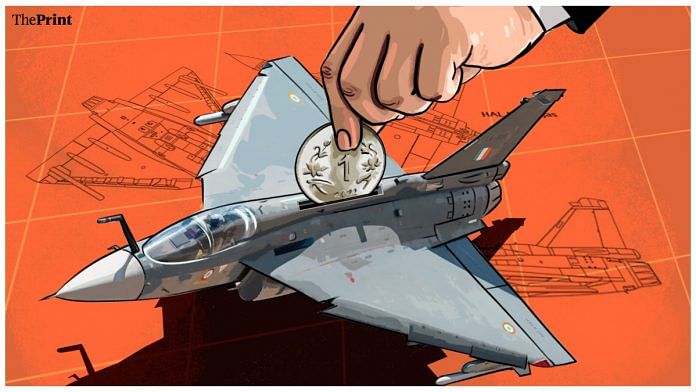What most people know about India’s defence business is that, while the government has been trying for decades to achieve self-reliance in weapons development and manufacture (mostly through government-owned companies), the reality is that India is the second-largest importer of defence hardware. That paradoxical outcome is not for want of trying — though perhaps not trying the right way.
What few know is that India has the third- or fourth-largest budget for defence research and development (counting space and atomic energy as part of defence). The money spent is a lot less than by either the US or China, but it is bigger than the defence R&D budgets of the UK, Germany, and France, all of which make frontline defence weaponry in a way that India does not.
In fact, for leading public sector defence companies in aerospace and electronics, R&D has accounted for a bigger share of total expenditure than the international average.
The paradoxes don’t end there. On the one hand, it is evident that indigenously produced weaponry is slowly coming into its own, examples being the Tejas and Brahmos, a range of other missiles, and impressive shipyard capabilities. On the other, while officials who have dealt with the subject talk of a sharp increase in the sales of domestic defence units, a greater share for the private sector, and reduced dependence on imported hardware, the available numbers suggest that defence production has been more or less static in dollar terms, as indeed have defence exports.
So, has this been a good news story, or its opposite? Perhaps both.
What is clear though, from a recent discussion involving people in the field, is that some winds of change are blowing. The government has determinedly opened up the sector to private manufacture; and the finance minister in her last Budget speech said that a quarter of defence R&D spending funded by the government would be done by private industry and in non-government institutions.
So far that has remained a statement of intent, but the C-295 transport aircraft will be made by a Tata-Airbus joint venture, and howitzers are being made by Larsen & Toubro and Bharat Forge. Such large enterprises now keep company with the 10,000 small and medium enterprises that already exist in the sector.
Also read: A road paved with surprises — why Indian economy’s steady course can’t be taken for granted
On the R&D front too, the government set up four years ago a Defence Innovation Organisation, whose executive arm (Innovation for Defence Excellence, or Idex) has funded well over a hundred R&D projects in the field of drones, robotics, artificial intelligence, and advanced materials, among others.
In addition, some start-ups produce dual-use products for image recognition, wearable technology, and the like. Those in the sector talk of a spreading awareness that things are finally changing.
Which is not to say that problems don’t persist. The defence procurement system remains a stumbling block for many. The armed forces take too long to accept products based on domestic R&D, and the standard practice of going for the cheapest bidder does little to encourage vendors who have developed technology with government funding.
Idex funding has helped with drone technology in particular, but so far there are few if any actual orders materialising. The fact that a production-linked incentive scheme has just been announced for the manufacture of drones and drone components might make a difference.
Exports too might get scaled up. Tesla, for instance, is said to have shown interest in locally developed materials technology for the faster charging of batteries. Two companies have won export orders for the Pinaka rocket firing system. And earlier this year, Malaysia signed a memorandum of understanding with Hindustan Aeronautics for the Tejas fighter; unfortunately, China might eventually get the contract.
Perhaps it is too early for isolated deals and breakthrough domestic R&D to register on a scale large enough to make a difference to the macro numbers. But among the steps that have helped is that the government no longer claims ownership of the intellectual property created with government-funded research; companies are therefore better positioned to raise capital for moving to the production stage. With luck, defence research and defence production could emerge as a genuine good news story.
By special arrangement with Business Standard
Also read: Mean or nice? It’s time for India to decide what kind of economic policy it wants to follow



